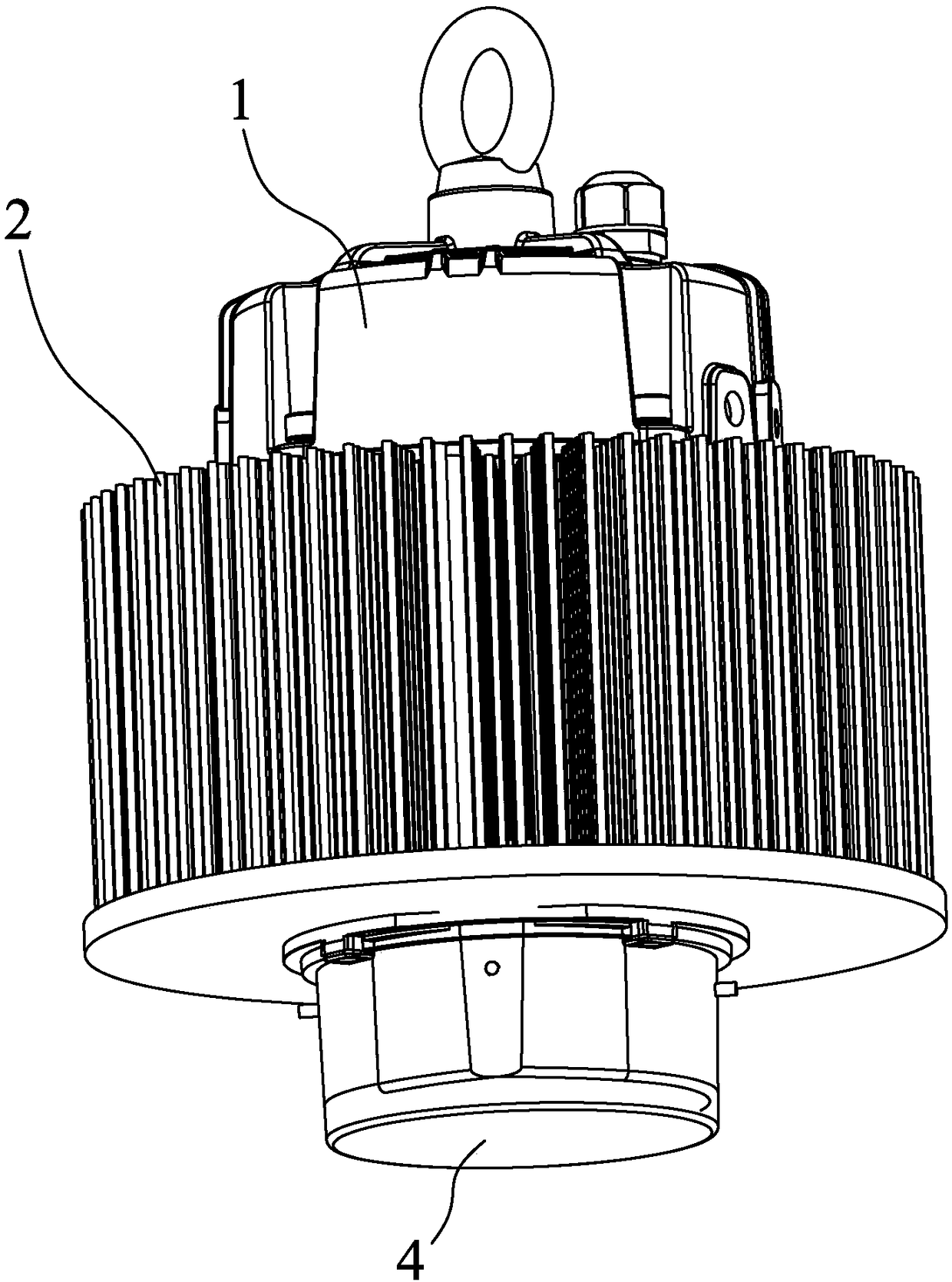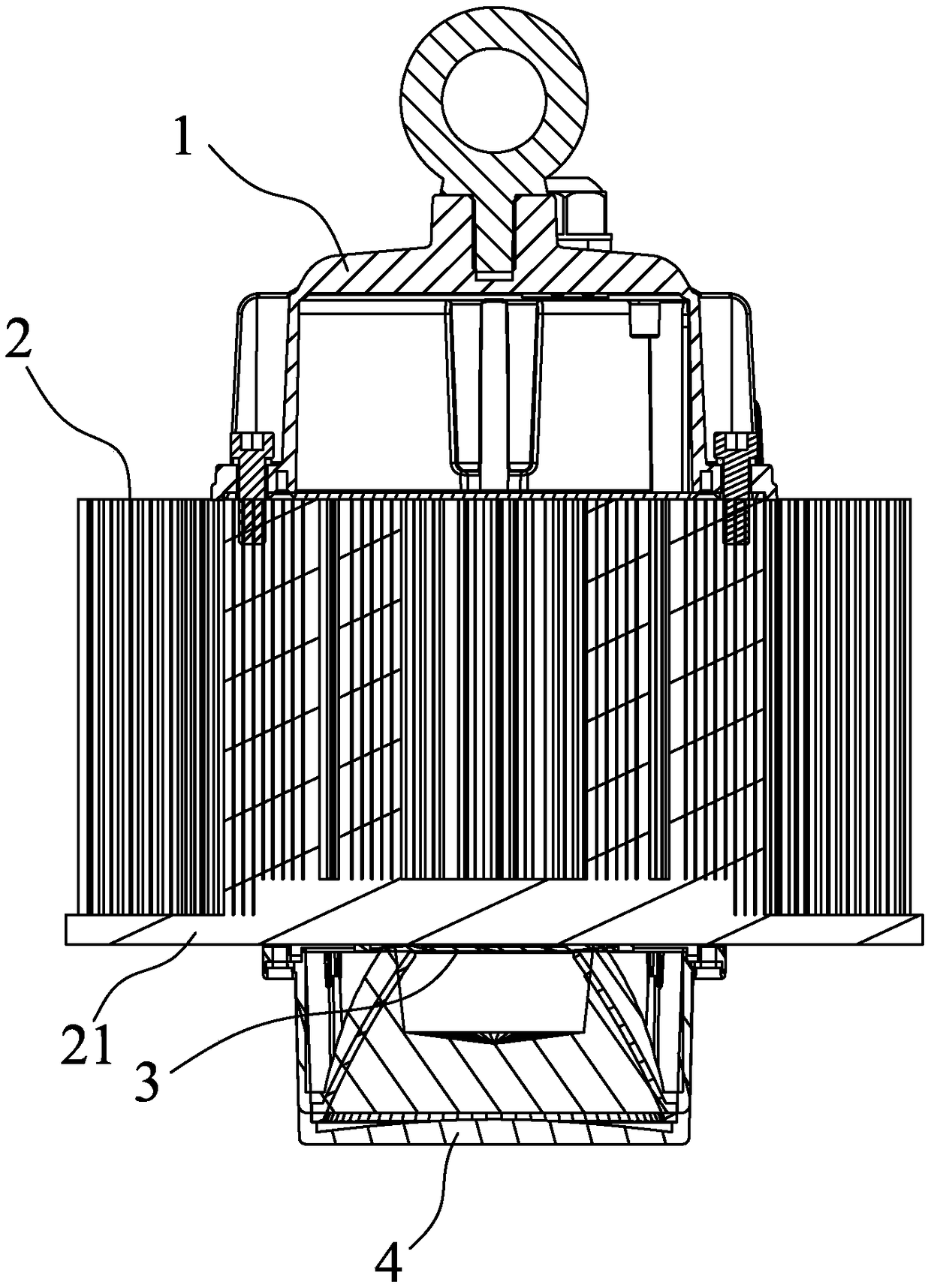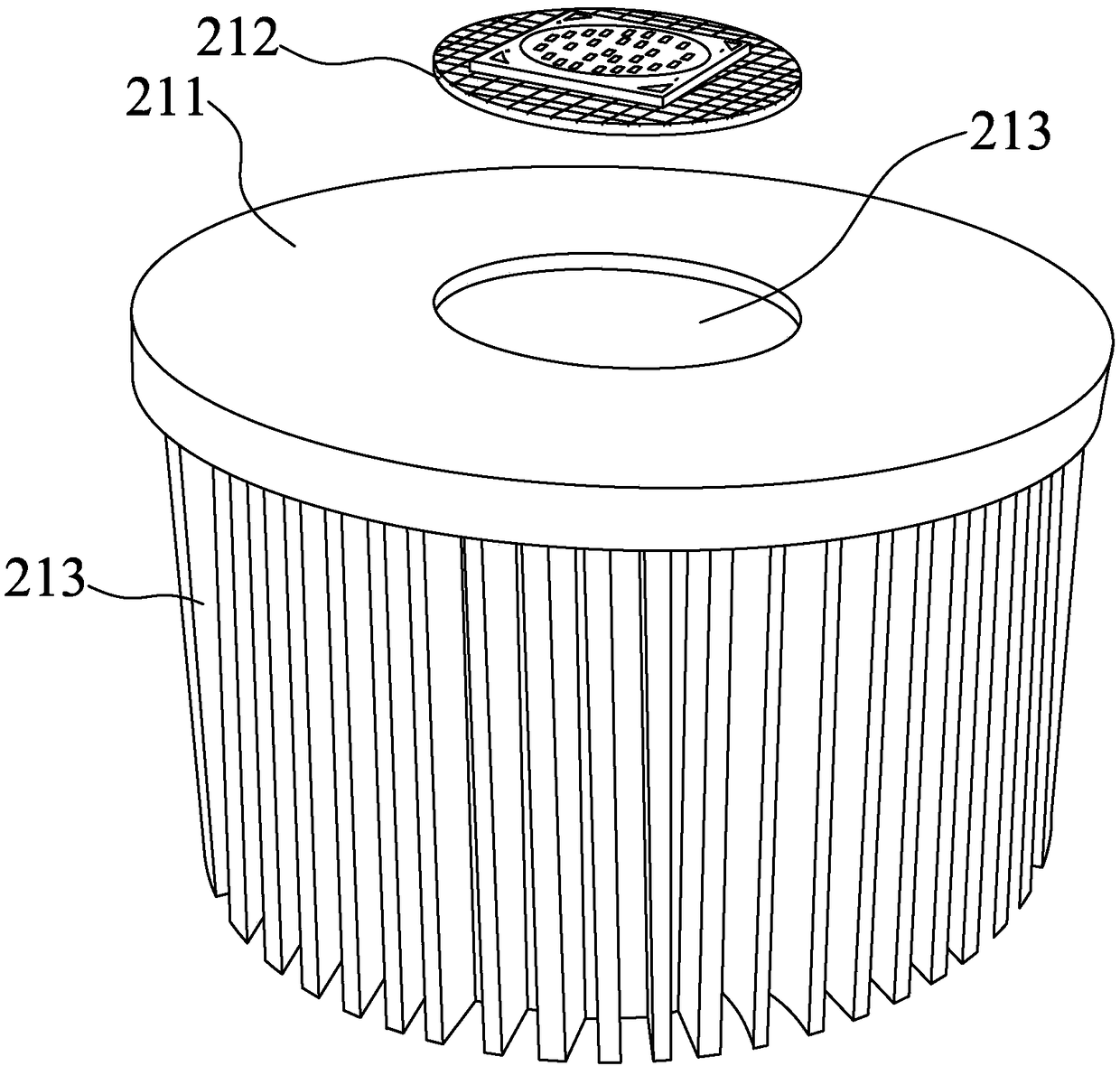An LED light emitting device for increasing luminous flux density
A light-emitting device and luminous flux technology, which is applied in the direction of electrical components, electric solid-state devices, circuits, etc., can solve the problems of low power, the inability of LED light-emitting devices to be actually put into use, and the inability to increase heat dissipation performance and power synchronously, so as to achieve the goal of increasing density Effect
- Summary
- Abstract
- Description
- Claims
- Application Information
AI Technical Summary
Problems solved by technology
Method used
Image
Examples
Embodiment Construction
[0048] In order to further explain the technical solution of the present invention, the present invention will be described in detail below through specific examples.
[0049] like Figure 1 to Figure 17 As shown, it is a demonstration of various specific embodiments of an LED lighting device with improved luminous flux density related to the present invention.
[0050] figure 1 and figure 2 As shown, the present invention relates to an LED lighting device with improved luminous flux density, including a power supply 1 , a heat sink 2 , a light source assembly 3 and a lens assembly 4 located in front of the light source assembly 3 .
[0051] Main features of the present invention are:
[0052] First: the light source assembly 3 has a light source substrate 31 and several LED crystal grains 32 welded and connected to the light source substrate 31. The light source substrate 31 adopts a positive and negative separation substrate; the use of a positive and negative separation...
PUM
 Login to View More
Login to View More Abstract
Description
Claims
Application Information
 Login to View More
Login to View More - R&D
- Intellectual Property
- Life Sciences
- Materials
- Tech Scout
- Unparalleled Data Quality
- Higher Quality Content
- 60% Fewer Hallucinations
Browse by: Latest US Patents, China's latest patents, Technical Efficacy Thesaurus, Application Domain, Technology Topic, Popular Technical Reports.
© 2025 PatSnap. All rights reserved.Legal|Privacy policy|Modern Slavery Act Transparency Statement|Sitemap|About US| Contact US: help@patsnap.com



